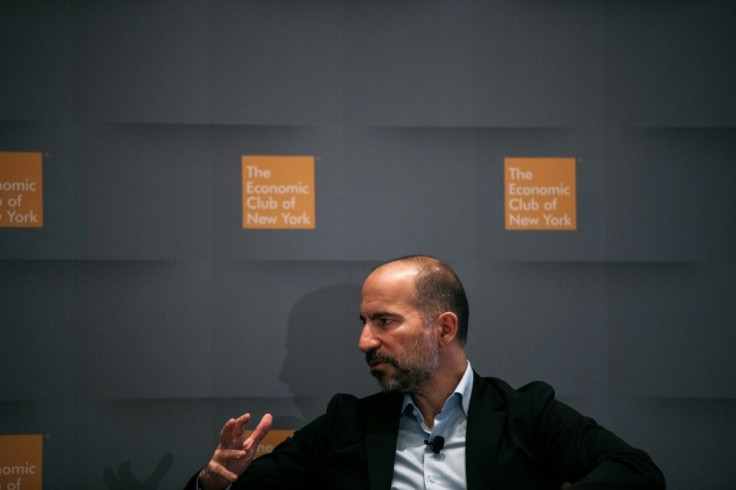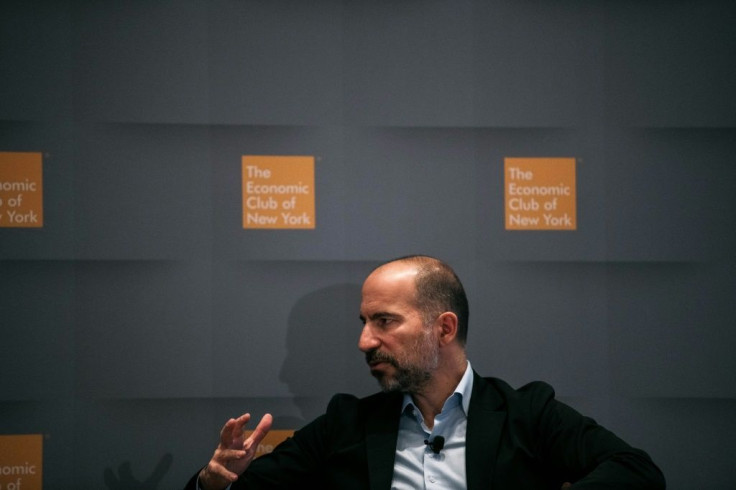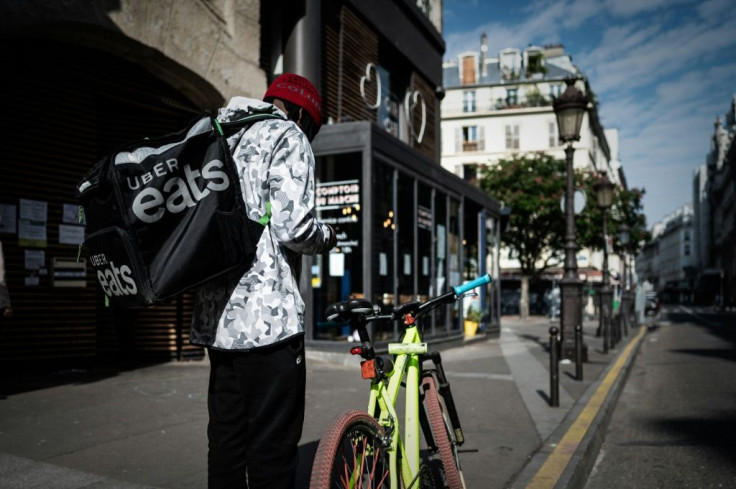Uber Losses Widen But Appetite Grows For Eats
Uber said Thursday its losses widened in the first quarter as the pandemic bit hard into ridesharing but that it saw signs of recovery and a booming appetite for its Eats meal delivery helping it through the crisis.
The San Francisco-based company said ride bookings were up eight percent over the first three months of the year despite the lockdowns that began in the final weeks of the quarter.
Data from April suggests a massive impact from the COVID-19 outbreak but also some indications of a rebound in some markets, chief executive Dara Khosrowshahi said.
"I won't sugarcoat it -- COVID-19 has had a dramatic impact on Rides with business down globally around 80 percent in April... but there's some green shoots driving restrained optimism," he told analysts.

Khosrowshahi said Uber was seeing a "fourth consecutive week of growth" with bookings up 12 percent last week.
The comments by the CEO sparked a rally in after-hours trade, lifting Uber shares some six percent.
Uber reported 53 percent revenue growth in its Eats restaurant take-away delivery service, as more people ordered in to avoid the coronavirus. Eats revenues rose to $819 million, about one-third of the total for Uber in the quarter.
"There's been a tremendous increase in restaurant sign-ups," said Khosrowshahi.
"We believe these trends are here to stay."

With a network of app-summoned drivers, Uber is position to expand into delivering groceries, medicine, retail purchases and more with minimal investment, Khosrowshahi added.
The net loss of $2.9 billion in the quarter was nearly triple the level of a year earlier and included massive write-downs of the value of some of its assets -- which companies are required to count as losses under accounting rules.
Gross bookings were up eight percent from a year ago to $15.7 billion, with revenues to the company rising 14 percent to $3.5 billion.

Uber has said it has ample cash on hand to ride out the coronavirus pandemic, which has forced billions of people to remain at home.
"Our ample liquidity provides us with substantial flexibility to navigate the current crisis," said chief financial officer Nelson Chai.
Uber has been tightening its belt with moves including the layoff of some 14 percent of its workforce.
It said earlier Thursday it was leading a $170 million investment in Lime as part of a plan to merge its Jump electric bike and scooter operations into the rival service.
The tie-up will free Uber to concentrate on its core rideshare and delivery services while Lime -- which operates in some two dozen countries -- will manage scooters and bikes including the Uber Jump fleet.
"The reality is the world has changed, so we don't know when the recovery is going to be," Khosrowshahi said.
"We are going to take the actions that we think are necessary...there's no sacred cow and so we are going to look at everything."
Uber and other "sharing economy" services are expected to feel a massive impact from the coronavirus outbreak which has dampened economic activity and made travelers more cautious.
Rival rideshare platform Lyft this week reported a loss of $398 million, narrower than a year ago, as revenues increased to $956 million.
The two firms listed shares last year with an eye toward long-term profitability, goals which have become more elusive in the current environment.
"On the other side of this dark valley, the Uber business model will likely look a lot different for the next few years (at least) and the company must rationalize costs and a smaller operation to focus on attaining profitability in this 'new normal' backdrop," said Daniel Ives of Wedbush Securities in a research note.
"On the ride sharing front, Uber and Lyft face Herculean-like challenges looking ahead as the new reality will likely change the business models of these companies (and competitors) for the foreseeable future."
Uber faces a range of regulatory issues around the world as it seeks to disrupt personal transportation. California this week sued both Uber and Lyft alleging they violated a state law by classifying drivers as contractors instead of employees.
© Copyright AFP 2024. All rights reserved.





















